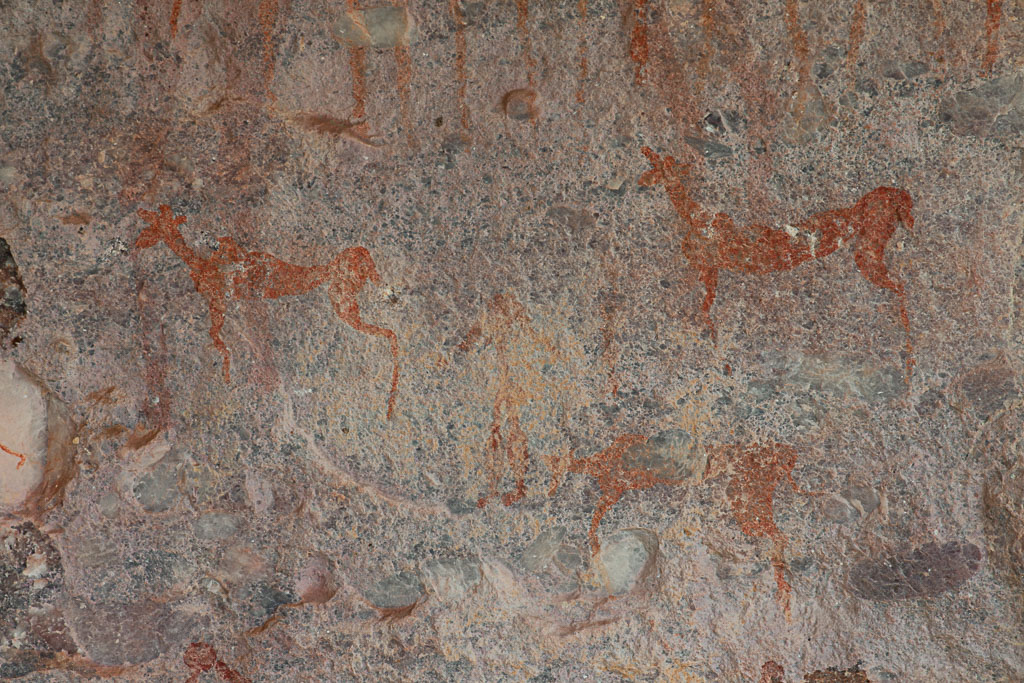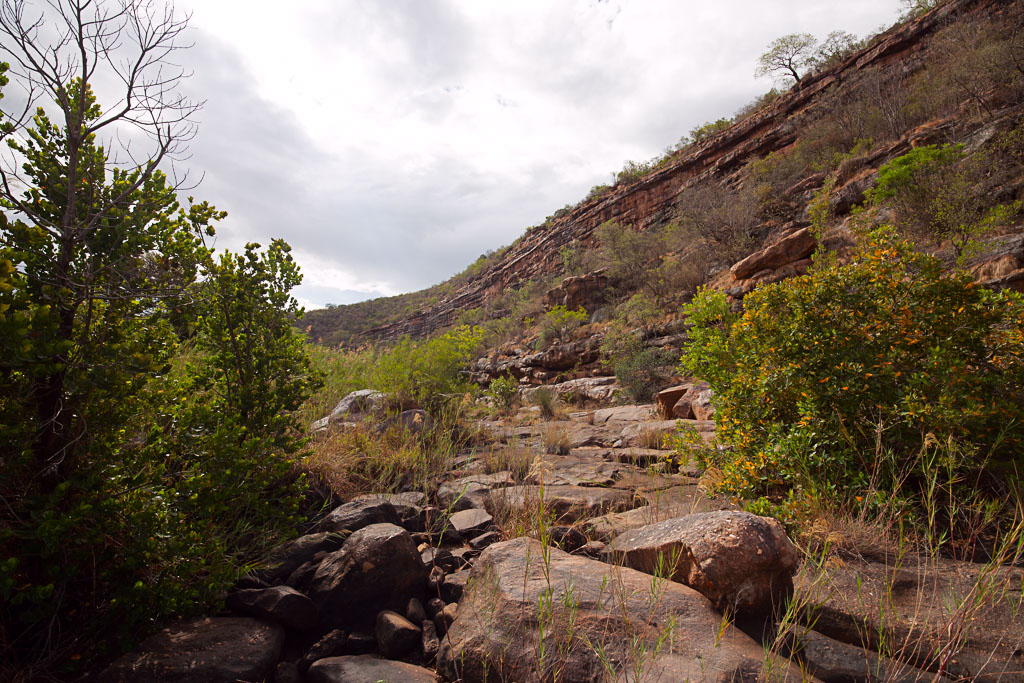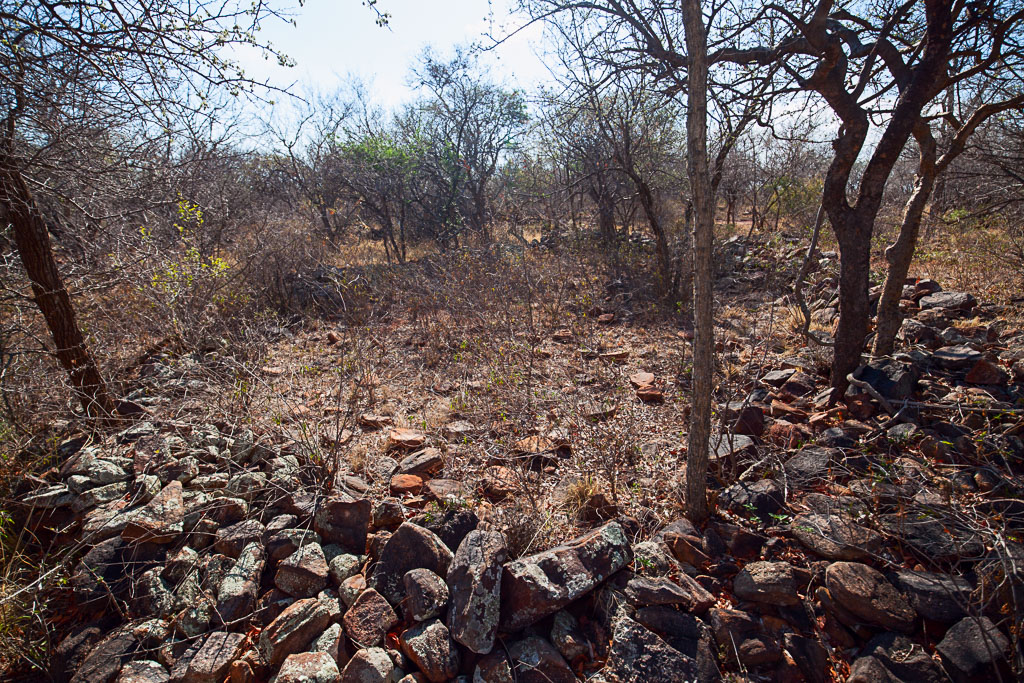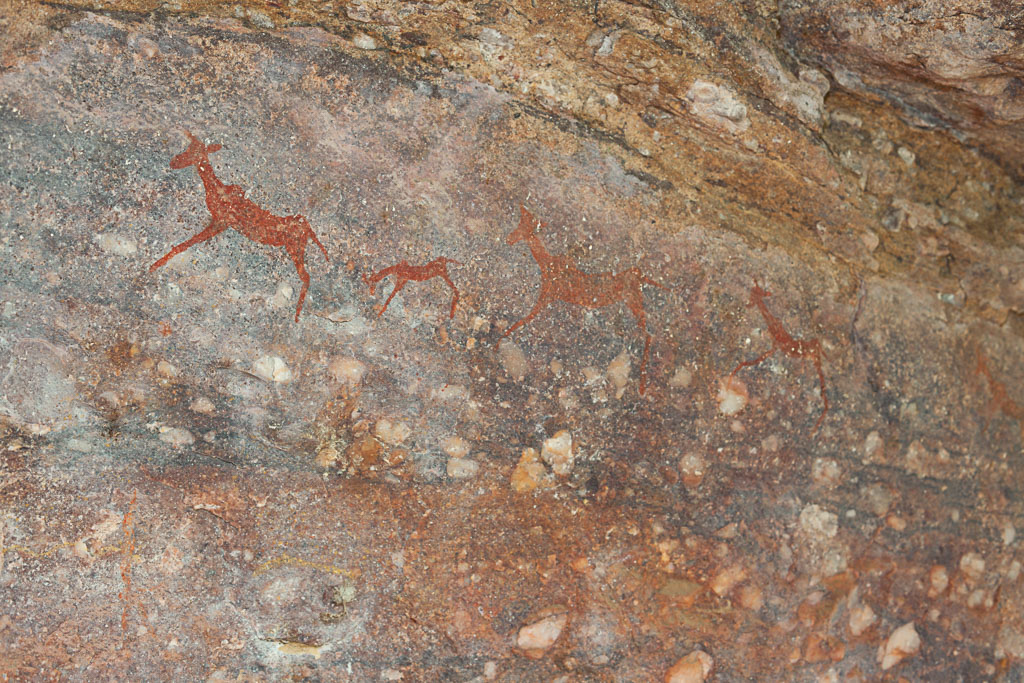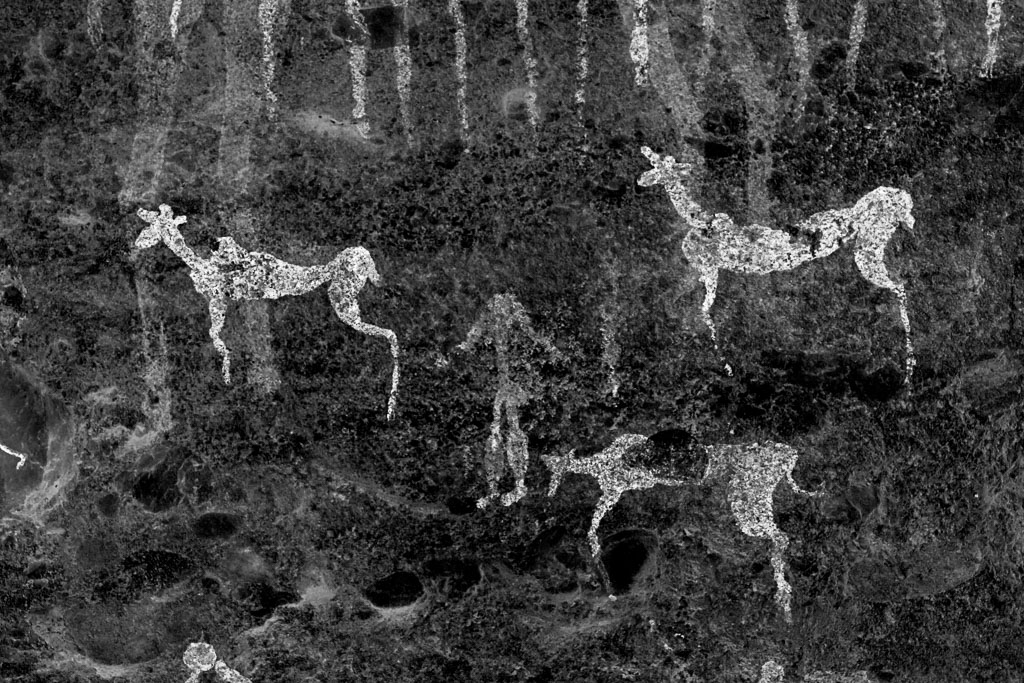The encounter between eland (or other large animals such as elephant, giraffe & kudu) and hunter is a central theme in southern African hunter-gatherer culture, but it is not merely a record of a hunt or of an intention to hunt.
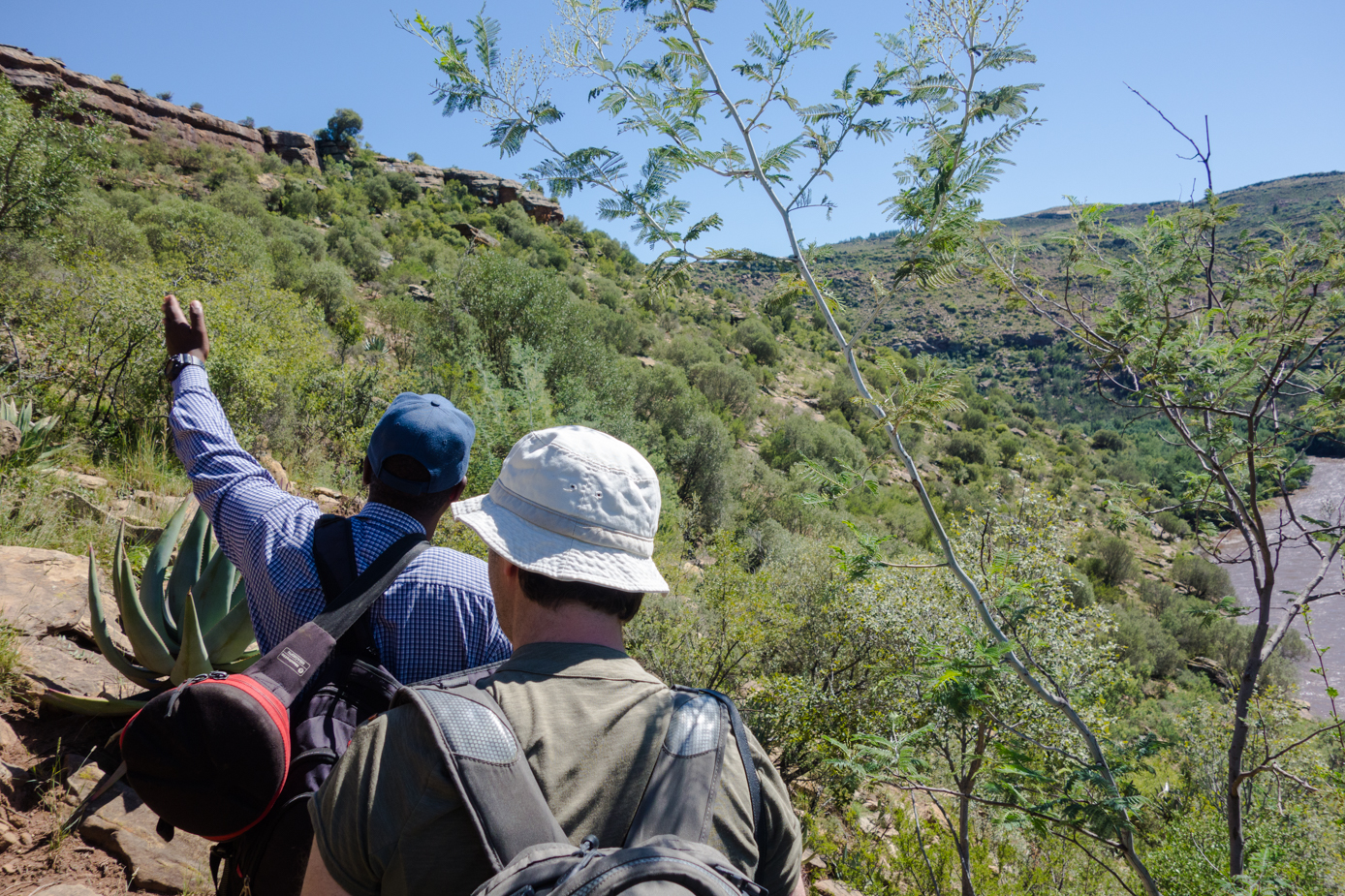
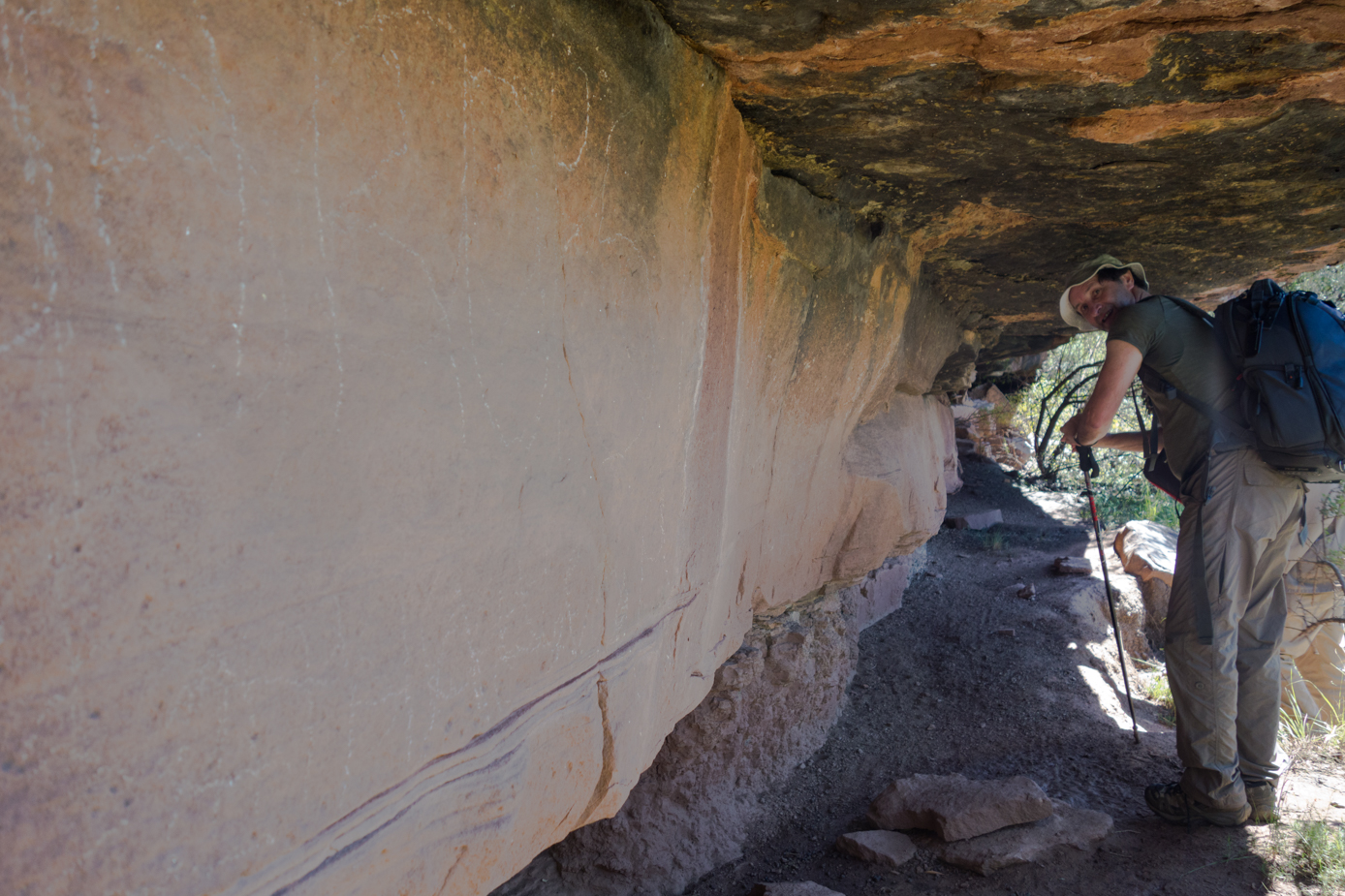
Painted in an unobtrusive shelter above the Sebapala River in southern Lesotho are images that give us insight into the worldview of ancestral Bushman hunter-gatherers. Ntate Sekotlo guided us to this rock art site above the Sebapala River. The paintings are NOT in the large krans at the top of the picture to which Sekotlo seems to be pointing. They are in an overhang of which you can only see a tiny part just above Ntate Sekotlo’s head. The interior of the overhang is low and shallow. Renaud Ego on the right.
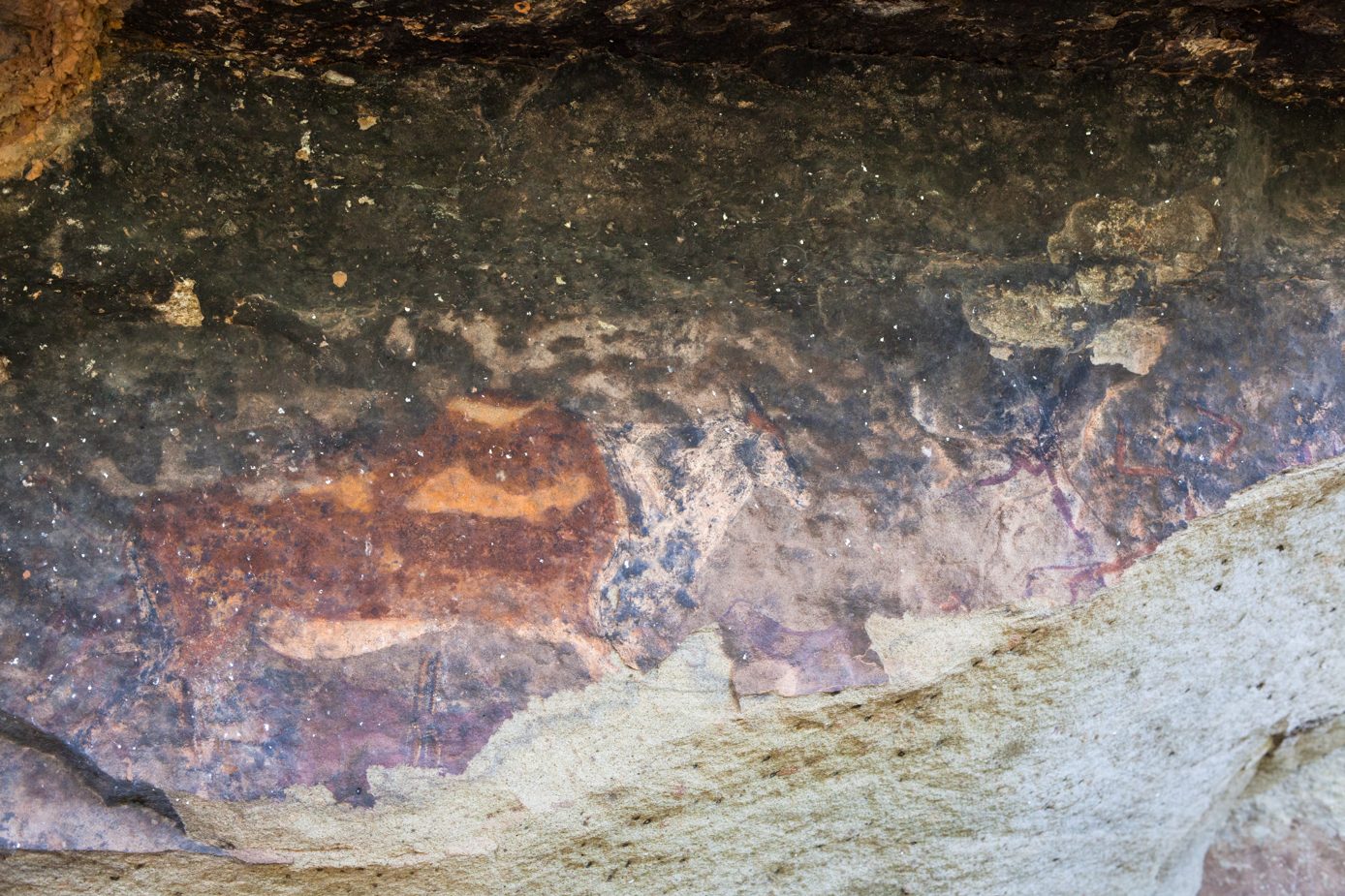
Encounter with an eland: eland on the left and hunting figures at the right. One of the central themes in southern African hunter-gatherer rock art is the meeting of hunters and one of the big meat animals, such as this eland.
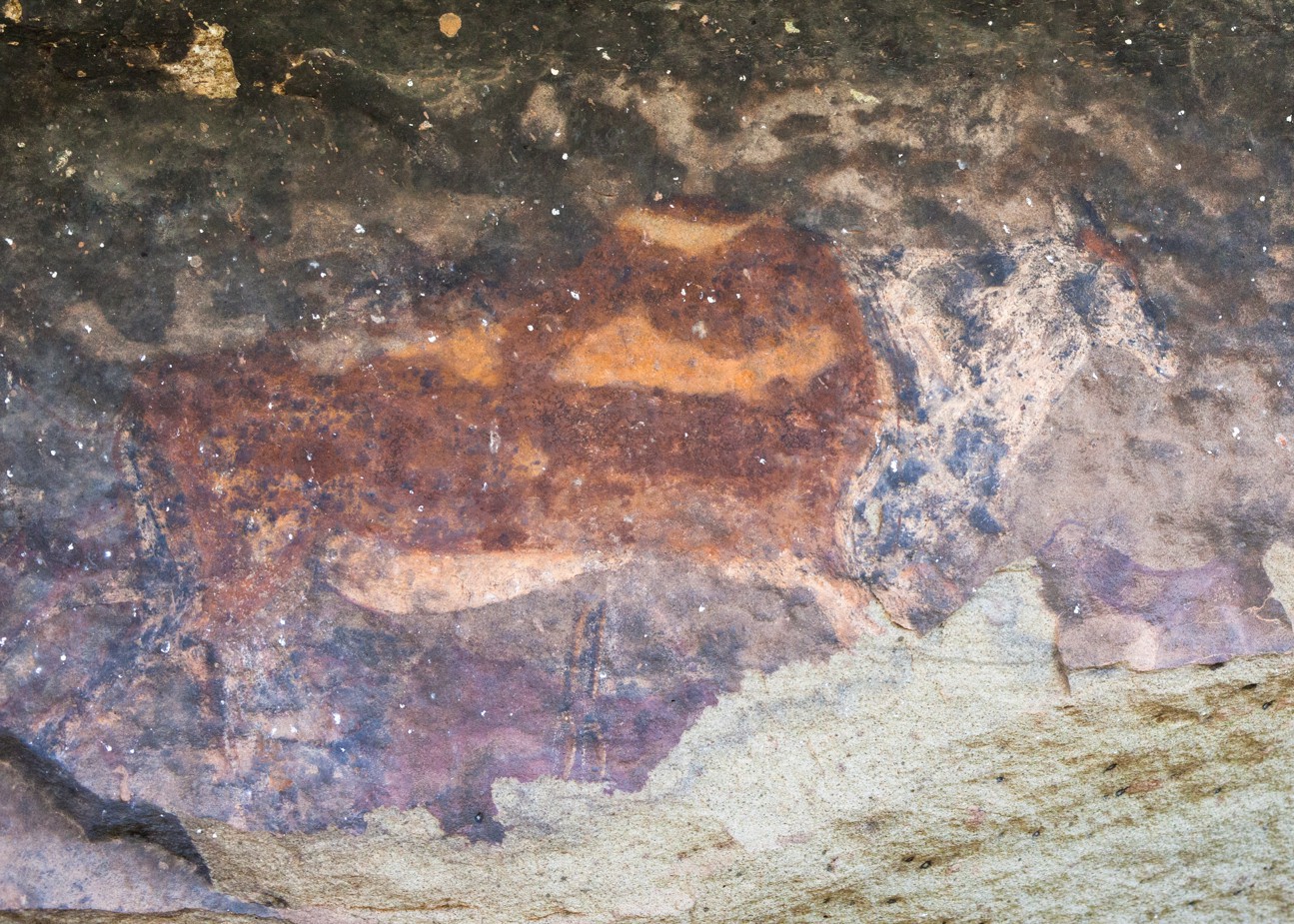
At left is a very large and magnificent eland with a large dewlap. It is probably an older, bull eland. The hunter-gatherer painters in South Africa’s southeastern mountains spent more time and effort on eland images than almost any other category of image.
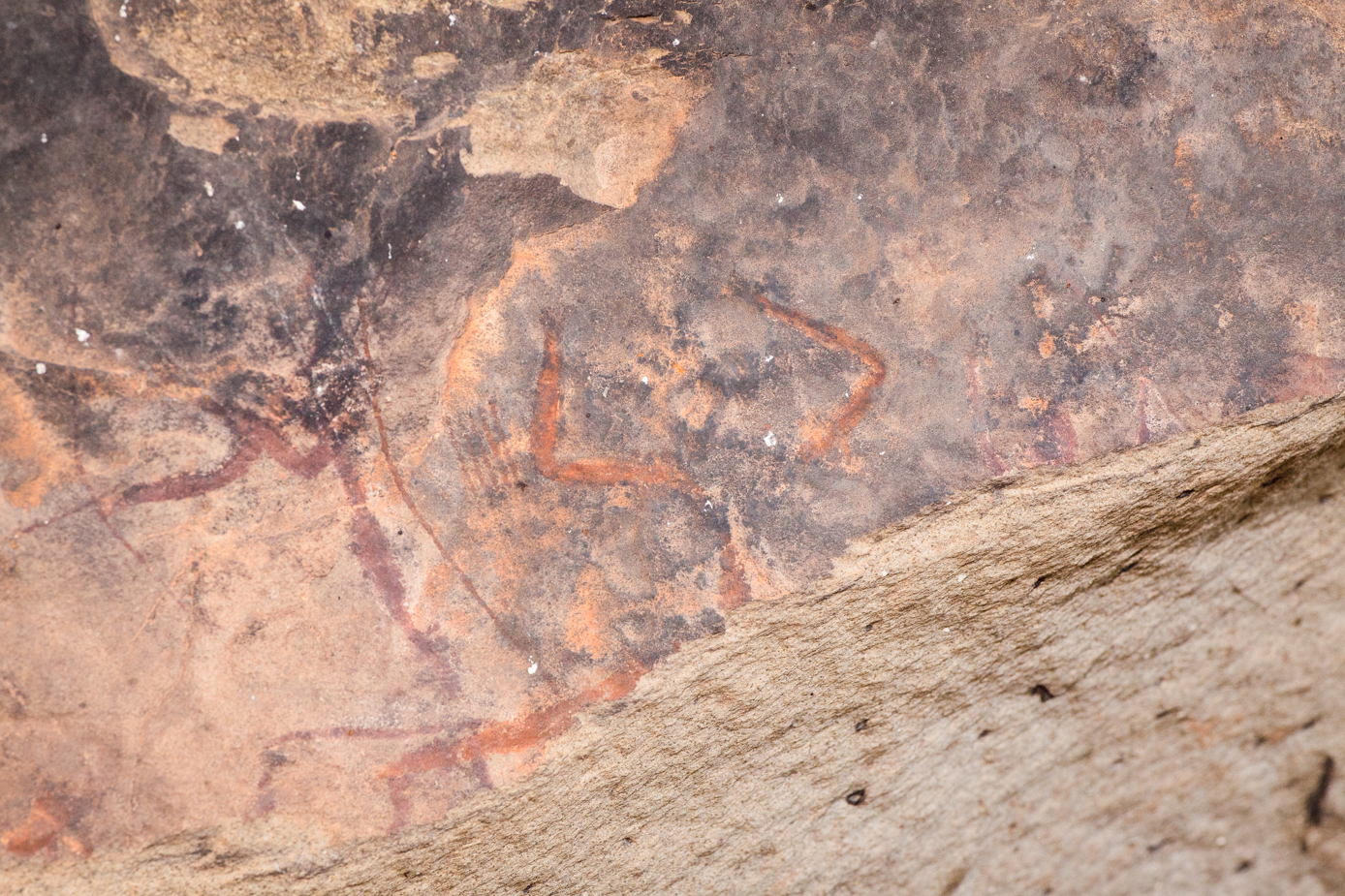
Facing this massive eland are a few human-like figures. A section of the rock on which they are painted has broken off so we cannot see much of them. But we can see a figure in red (the head is obscured) that is holding a strung bow (note the white bowstring) and pointing it at the eland.
Next to this is another larger figure in orange with its hands raised high and bent at the elbow. This is a common posture that is often found in painted contexts in which a human figure confronts large meat animals. To the left is the figure’s bow and arrows. These are hunters.
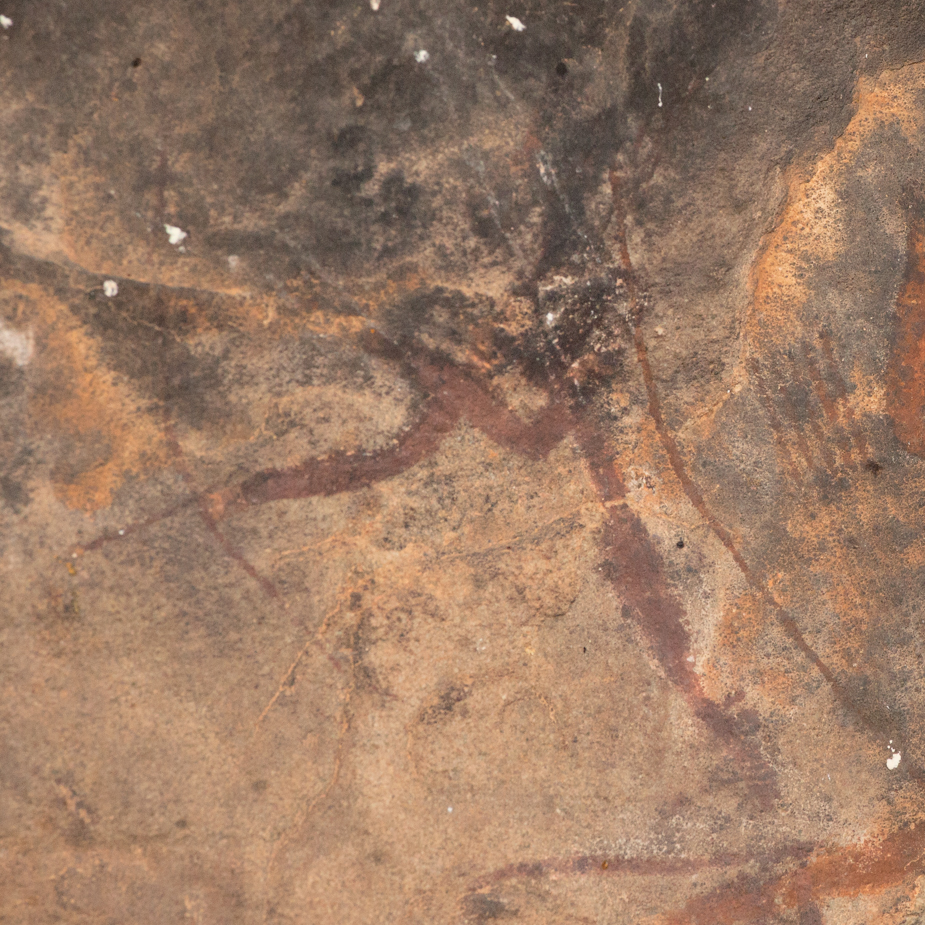
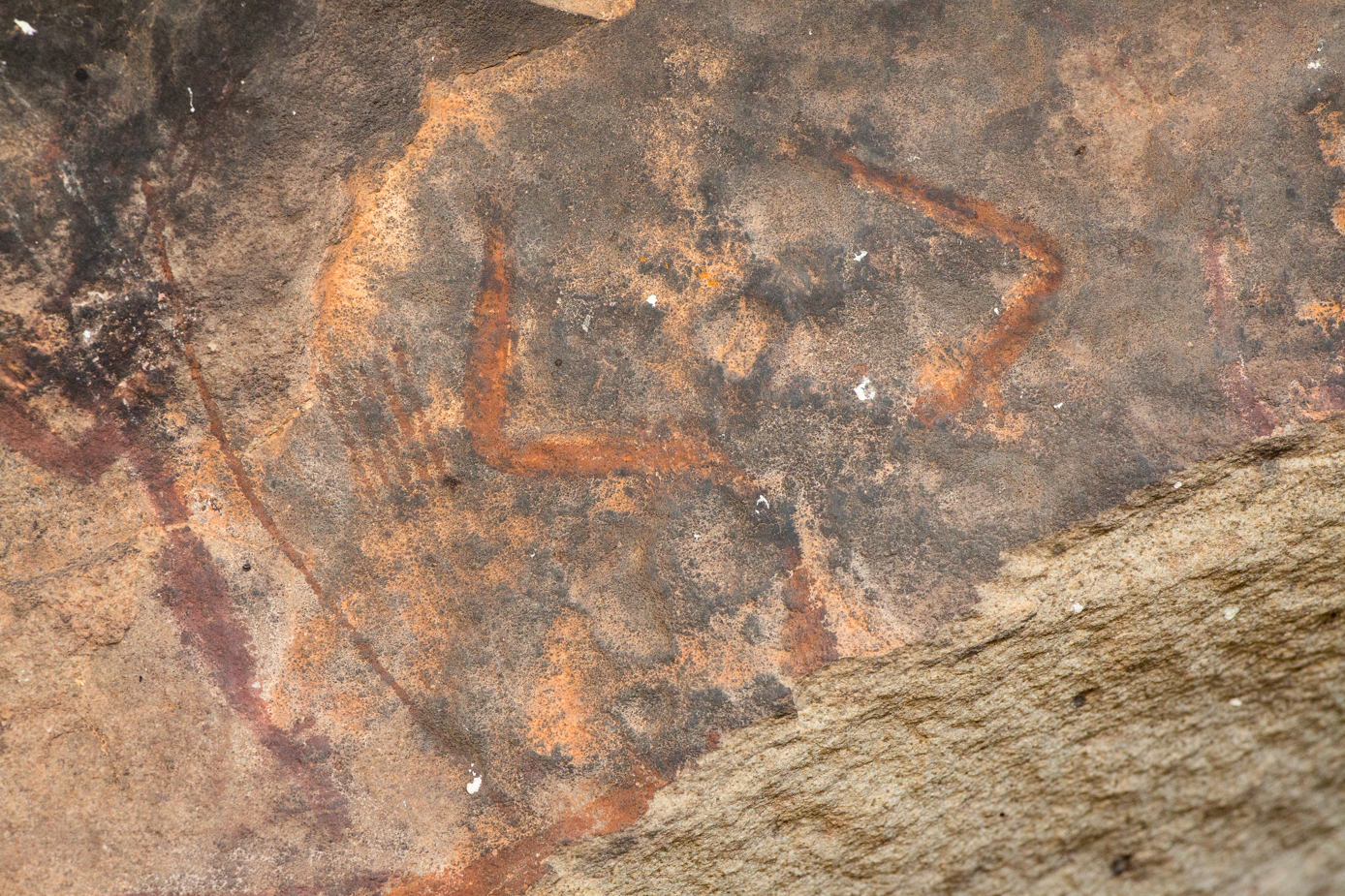
Anthropologists and rock art researchers have long recognised that ‘hunting’ is a religious matter. Mary Douglas goes so far as to say that the significance of hunting in cosmological terms ‘far surpasses its primary object—the supply of meat’.
‘Hunting,’ says Megan Biesele of the Ju|’hoansi, ‘is an activity for which special power must be cultivated through supernatural disciplines’. Hunters do not simply go out and shoot an animal—they find and kill animals because supernatural forces permit it.
Eland (and other animals too) were created by the entity (god) called /kaggen. He did his best to frustrate the intentions of the hunter. Hunters had to follow a ‘code’ of behaviours in order to be successful.
On the other hand, people had developed the ability to ‘own’ animals, that is, to control animals, their behaviour and their movements. These powers could bring an animal under a hunter’s arrow and make it die quickly of the effects of the arrow poison.
The emphasis on human-animal encounters like the one in this post points to a persistent underlying conflict between hunter and prey, and the taking of life. And in order to have some understanding of the significance of rock art we must try to apply what we know of the beliefs of the hunter-gatherer artists to understand them.
